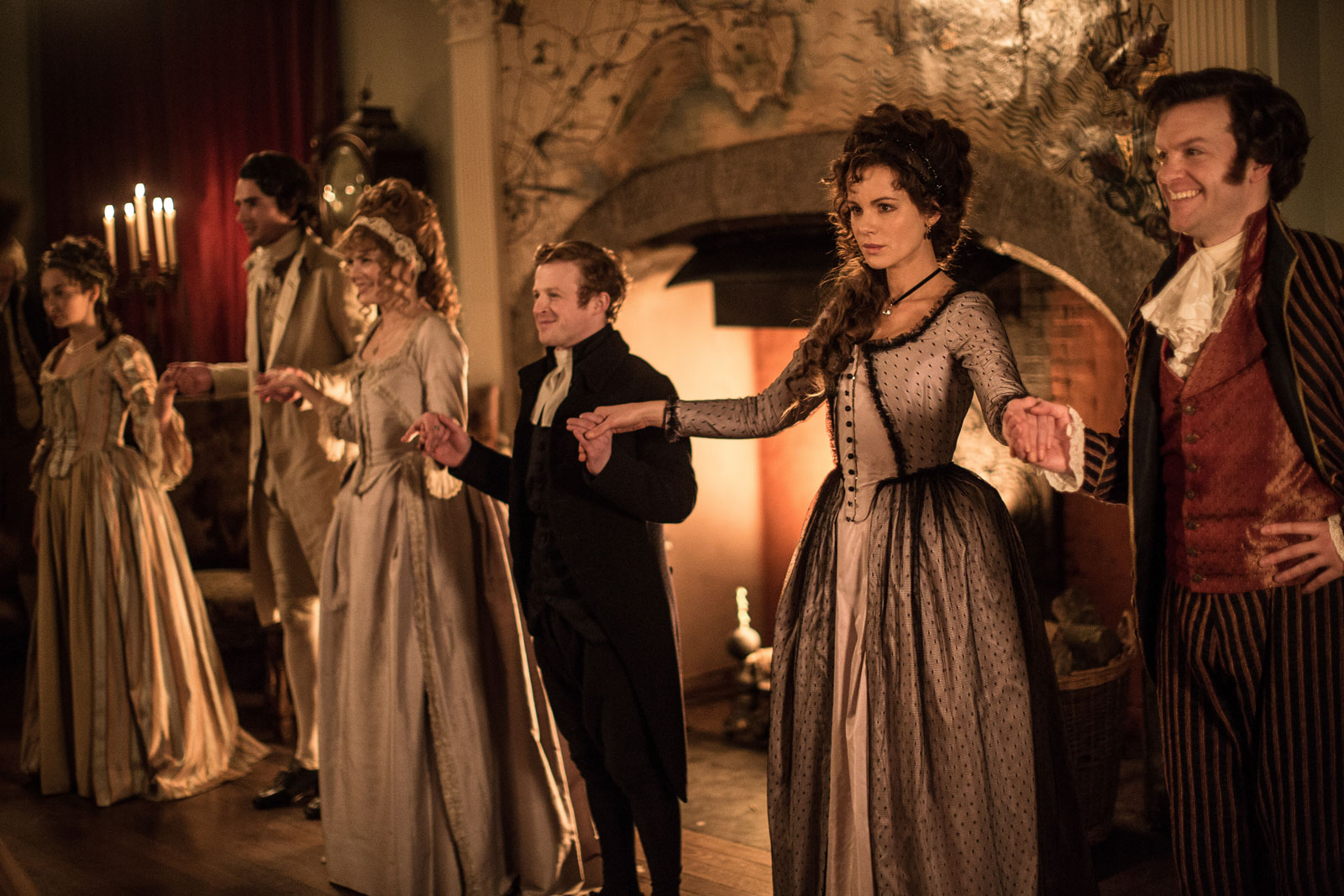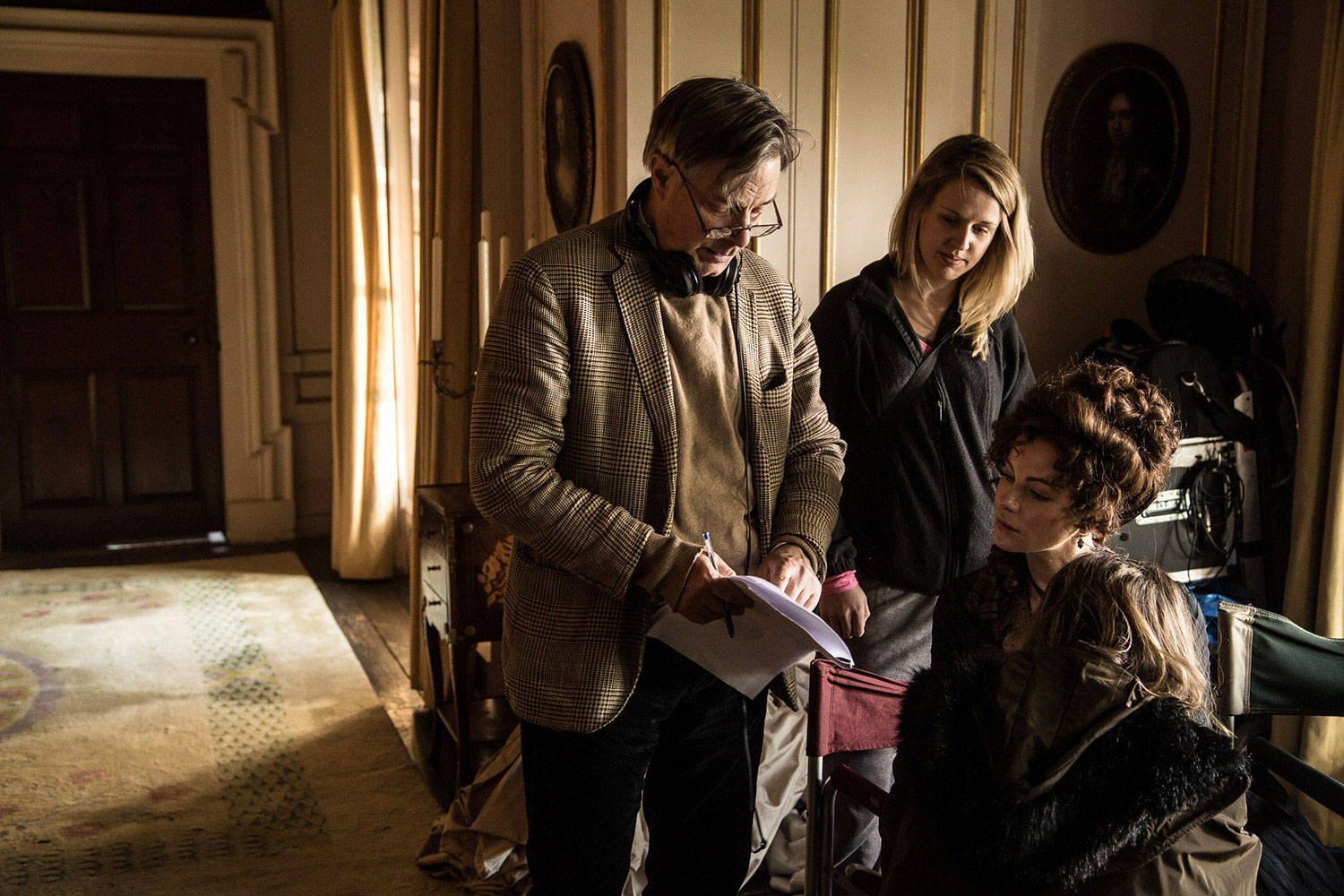A graph plotting the moments of overlap between those twin arts of narrative, the novel and the movie, would show a range of highs and lows. It would demonstrate how far adaptation into film is a thriving genre (while its reverse, novelization, is no longer a respectable form). And while it might in one place be blackened by a cluster of novelists enamored of cinema, it would also show the rarity of the director with novelist-envy. Lonely, surrounded by white space, would be an outlier: Whit Stillman.
There’s an early scenelet in his first movie, Metropolitan (1990), featuring the film’s two romantic heroes: Tom Townsend and Audrey Rouget. They are arguing about Jane Austen’s Mansfield Park.
Tom: The whole story revolves around what? The immorality of a group of people putting on a play.
Audrey: In the context of the novel it makes perfect sense.
Tom: In the context of the novel… Nearly everything Jane Austen wrote is ridiculous from today’s perspective.
Audrey: Has it ever occurred to you that today looked at from Jane Austen’s perspective would look even worse?
An homage to Jane Austen in the middle of a yuppie movie! But then, Stillman has never been shy with his literary provenance. Stillman’s cinematic innovation—in his 1990s trilogy of high bourgeois melancholy, Metropolitan, Barcelona, and The Last Days of Disco, and his 2012 film Damsels in Distress—has been to bathe cinema in a literary tone, a charmed artificiality. (Like his characters, Stillman admires the value in apparently outmoded things.) The atmosphere of his films owes as much to Henry James as it does to Truffaut or Max Ophüls. In Damsels in Distress, its heroine, Violet, is taking a course in “The Dandy Tradition in Literature.” On the blackboard, you glimpse Whit Stillman’s hidden lineage—Swift, then Pope, Peacock, Wilde, Firbank and Waugh—while the lecturer offers a critique of Ronald Firbank, that impresario of camp brilliance: “too little disciplined, too unserious in his unseriousness, to create works of enduring value.” The literary, I guess you could say, is always figured as a model of irony.
And now Stillman has made Love & Friendship, an adaptation of Lady Susan—an early Jane Austen novella, unpublished until after her death. It is his frankest version of literary cinema. It comes with an even more frivolous sidekick—his own novel(ization), also called Love & Friendship. And it is perhaps his most disciplined exercise in the unserious.
Jane Austen’s Lady Susan (written around 1794, when she was eighteen) is an epistolary novel, and a balletic farce of sex and money. Its plot centers on the recently widowed Lady Susan Vernon, “the most accomplished Coquette in England,” and her attempts to marry her daughter Frederica to Sir James Martin, a wealthy if charmless aristocrat, while she conducts affairs with two younger men: Lord Manwaring, and Reginald De Courcy. The novella ends with Lady Susan vanquished, and society appeased: Manwaring has abandoned her; Reginald De Courcy is soon to be “talked, flattered and finessed into an affection” for her daughter Frederica; and it is Lady Susan herself who is now married to the “rattle,” Sir James Martin. “Whether Lady Susan was, or was not happy in her second Choice—I do not see how it can ever be ascertained—for who would take her assurance of it, on either side of the question?”
It’s a quieter, English-country-house-version of Les Liaisons Dangereuses—where a ruthless woman is humiliated. But in Stillman’s rendering, something has happened to its finale. True, Lady Susan is now married to Sir James Martin and Frederica is married to Reginald De Courcy. But in the original, it is Reginald who broke off the relationship with Lady Susan, when he discovered the extent of her duplicity. In Love & Friendship, it is Lady Susan’s decision. It is not humiliation, but quiet control. At one point, her confidante, Mrs. Johnson, observes to Lady Susan that in fact to marry Sir James herself would not be an irrational project, given her precarious financial position as a widow: “I would rather be married to my own husband than dependent on the hospitality of others.” Stillman’s Lady Susan will not be Blanche DuBois. Her stratagems can be appreciated not as immoralities but as moving pirouettes of social survival.
In Stillman’s version, there are two moments of conversation between Lady Susan and Frederica that are central to the seriousness of his surfaces. “An offer as splendid as Sir James’s is not likely to come again,” Lady Susan observes. “He has offered you the one thing of value he has to give—his income.” This may be comically cynical, but it is also true. For as she elsewhere points out: “Dearest, our present comfortable state is of the most precarious sort. We don’t live—we visit. We are entirely at the mercy of our friends and relations…” To depend on the kindness of strangers or family is a terrible fate. You can only live, in Stillman’s films, if you are independent—and to be independent is both financial and spiritual. No wonder he was drawn to Austen. They are both analysts of power, and how it is distributed: and they both understand that power is most poignantly interrogated through narratives about women. It is on women, like Flaubert’s Madame Bovary or Fontane’s Effi Briest where modernism applied its pressure most brutally, and most revealingly. The precarity of not having enough money, and the effort to maintain one’s self—either as a widow or spinster or wife—was Austen’s great subject, and it is also Stillman’s, whether in eighteenth-century Britain or 1980s New York. (The constancy of his themes is doubled by the constancy of his actors: Kate Beckinsale and Chloë Sevigny, who explored a brittle friendship in The Last Days of Disco, now pursue less anxious conversations in Love & Friendship.)
Advertisement
This adaptation is really a rewrite. And maybe that’s a particularly attractive mode, when the novel to be adapted is in epistolary form. The game of the epistolary novel is to maintain a constant haze between foreground and background, between what is reported to a correspondent and what the reader must infer has happened: it is the art form of gossip, of the hint. That haze allows Stillman his delicately sincere inversion of Austen’s amused irony. Just as the accompanying novel he has published is purportedly by Rufus Martin-Colonna de Cesari-Rocca, a newly imagined nephew of Sir James Martin, Lady Susan’s second husband—and precisely intended as a corrective to Jane Austen’s Lady Susan, to undo the “great posthumous injustice” done to her by “the spinster Authoress notorious for her poison-pen fictions hidden under the lamb-skin of Anonymity.”
The injustice is Austen’s youthful lack of empathy for Lady Susan’s projects. For in Stillman’s world, our greatest vulnerability in society is to the judgments of others. “You can’t worry about what misinterpreters think,” someone says to Chloë Sevigny’s character in The Last Days of Disco—and this could be the slogan of Stillman’s oeuvre. Sure, the surface may be all frivolity and flippancy, a high bourgeois/aristocratic setting. Such archness and such a setting can make it easy to see these films as exercises in the unserious unserious. But Stillman’s gravity comes from the way he both understands the terrors of social relations—the pursuit of love and friendship—and also admires all strategies in artifice that might soften these terrors, subvert the tyranny of misinterpretation, and restore a version of utopia. Against the malice of the social, he places a range of tactics: optimism, elegance, tradition, invented selves and accents, the desperate maintenance of outmoded or contradictory ideals. So what if an ideal is absurd! And his highest ideal is eloquence.
Stillman’s characters are monsters of literary conversation. In Austen’s Lady Susan, her heroine makes a major observation to her friend Mrs. Johnson. It’s meant as evidence of immorality, but in Stillman’s film it is a charming statement of fact. “If I am vain of anything, it is of my eloquence. Consideration and Esteem as surely follow command of Language, as Admiration waits on Beauty. And here I have opportunity enough for the exercise of my Talent, as the chief of my time is spent in Conversation.” For in this new world invented by Stillman, people talk syntactically, at high speed, with absolute artistry (one comparison, in a different register, but at a similar pitch of artificiality, is Tarantino). Stillman uses dialogue the way Matisse uses color: it does not necessarily correspond to anything in the real world. Pedro Almodóvar once observed that
Timing in comedy is not like rational time. When the actor gives his reply, he hasn’t had the physical or mental time to assimilate the previous line, but he has to deliver his reply at full speed. No one is going to wonder if he’s understood what was being said to him. If the audience does wonder, it’s a bad sign.
Almodóvar’s examples of such buoyancy were from the grand era of screwball comedy: the movies of Preston Sturges and Ernst Lubitsch. But the purpose of Stillman’s velocity is slightly different. The velocity is a sign that they are in paradise, in a utopia of conversation.
Advertisement
To be in such a paradise doesn’t mean that vast harm or pain are absent. In all his films, there is an elegiac tone, as if something valuable is always failing or doomed. But therefore, he seems to be saying, the only moral position is to maintain an absolute lightness. “All this carrying on about a marriage that ended weeks ago,” sighs Chloë Sevigny as Mrs. Johnson. It is frivolous, true, a miniature Wildean moment—but it is also a refusal of our feelings’ established time-schemes. It is the kind of sentence a god might pronounce. And it reminded me of something Lampedusa observed of Jane Austen: that she is “l’anti-melodrama, the antithesis of opera.”
At such moments, trying to examine Love & Friendship, our definitions like adaptation or rewrite become faintly anachronistic, or clumsy. It’s a novel transformed into cinema, but it’s also a film that has allowed itself to be contaminated by literature. And that is the rarer, and greater, achievement.
Love & Friendship is now playing in New York City and Los Angeles.




